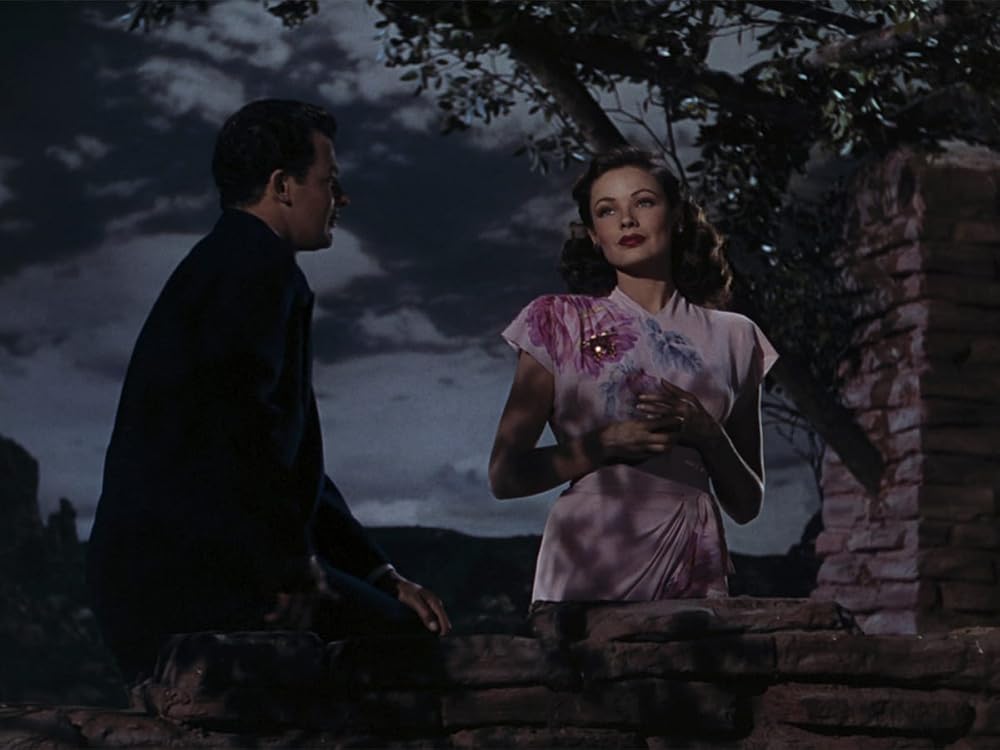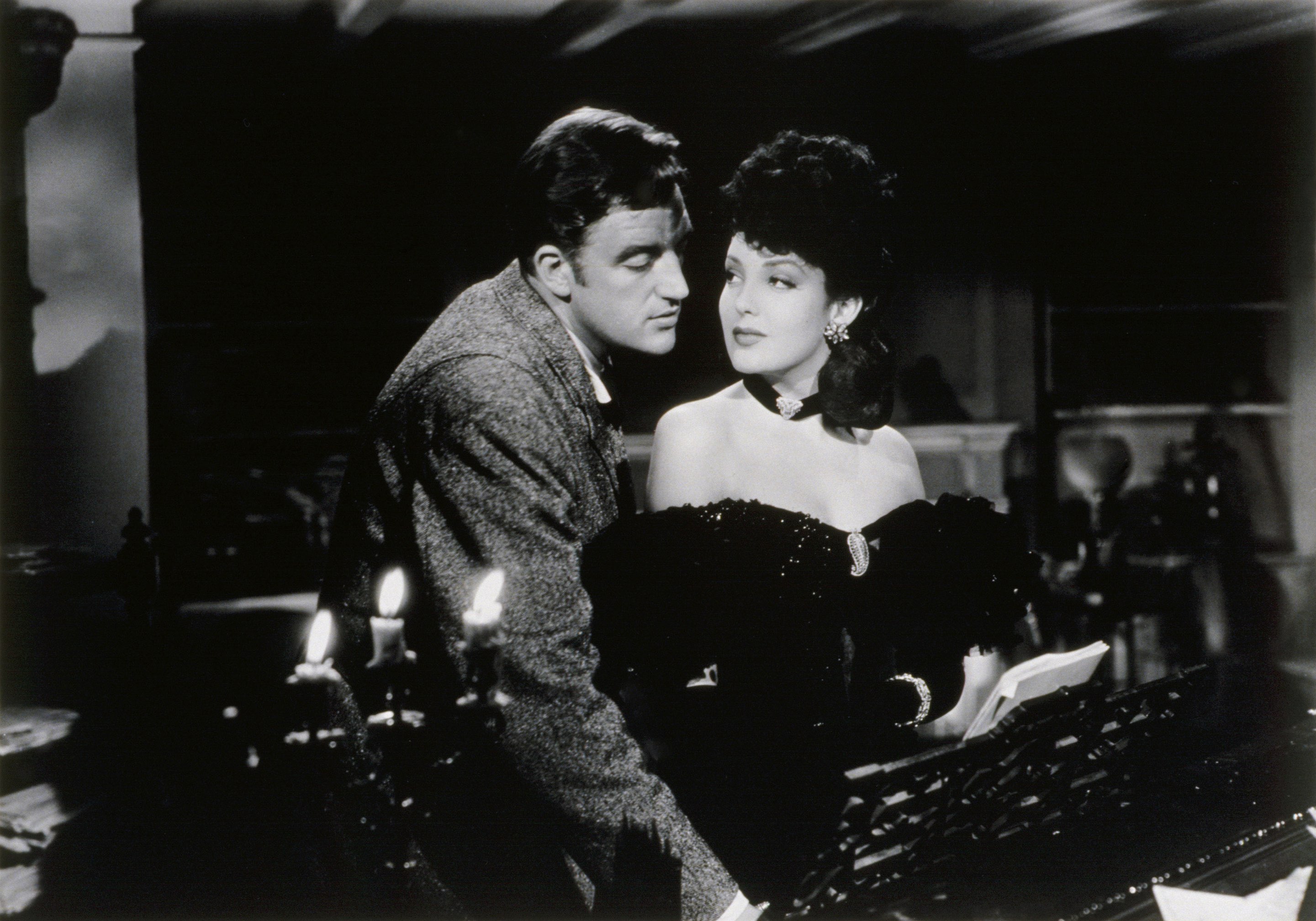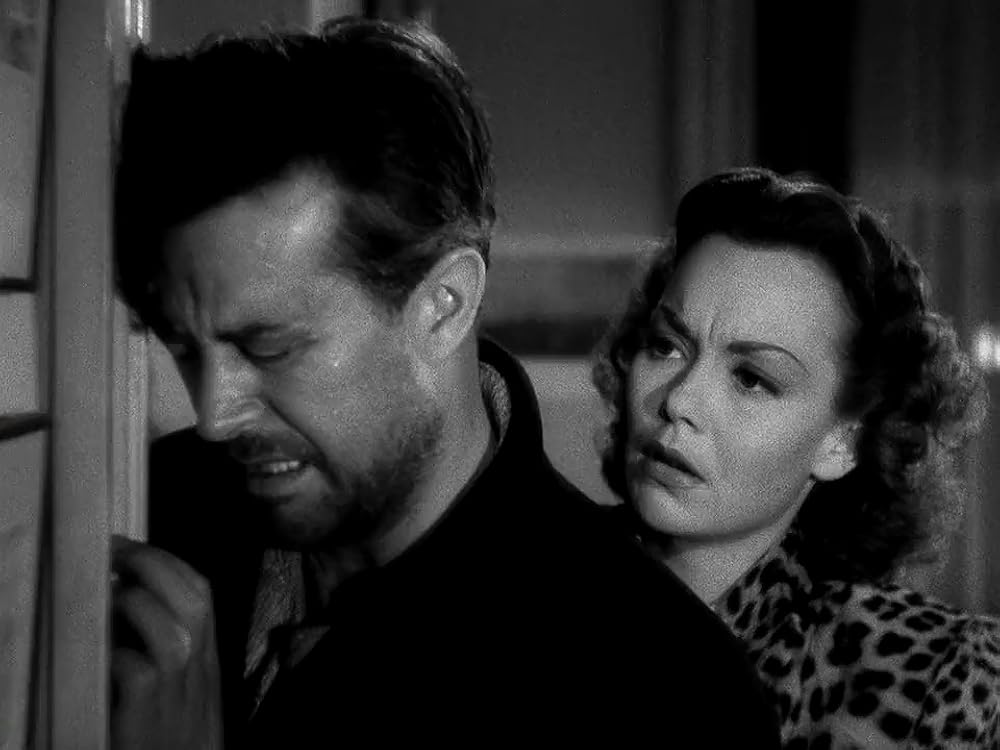my favorite movies of 1945:
(2) Scarlet Street
(3) Hangover Square
(4) The Lost Weekend
favorite of 1945:
Leave Her to Heaven(Gene Tierney, Cornel Wilde, Vincent Price, Jeanne Crain. Directed by John M. Stahl.)This is only the second color movie on my list, and the first in the 1940s. It’s been called the first “color noir.”
Leave Her to Heaven is slow-moving at first, but eventually becomes shockingly disturbing. It was a big influence on Martin Scorsese, who included it on his list of movies with the best use of light and color. In this video, Scorsese talks about how he instantly “fell in love” with the movie, how he had an almost hallucinatory experience the first time he saw it, and how he feels like he’s experiencing the movie for the first time every time he watches it — which he does about every year or two. (If you haven’t seen the movie, I don’t recommend watching past 5 minutes into that Scorsese video, since he mentions a major spoiler.)
Here’s the original trailer — unfortunately trailers weren’t so great back then, but this gives some sense of the movie:
Wikipedia has some interesting thoughts on the movie’s allusions to Greek mythology, whether the movie is a film noir, and whether Gene Tierney’s character is a “femme fatale.”
Stream Leave Her to Heaven on these sites.
2nd favorite of 1945:
Scarlet Street(Edward G. Robinson, Joan Bennett, Dan Duryea. Directed by Fritz Lang.) This movie is in the public domain, so you can watch the whole thing for free on YouTube:Some aspects of this film noir might be dated, especially the depiction of an abusive relationship. But what interests me most in Scarlet Street is the role of art, with Edward G. Robinson as a frustrated amateur painter. The movie has been praised for the authenticity of his paintings (actually by John Decker) as examples of American “outsider art” from that time. The 12 paintings in this movie later appeared in an exhibition at the Museum of Modern Art (MoMA) in New York City.
3rd favorite of 1945:
Hangover Square(Laird Cregar, Linda Darnell, George Sanders. Directed by John Brahm.)A pianist/composer with selective amnesia doesn’t realize he’s a serial killer.
The actor who plays that role, Laird Cregar, was a troubled man who died at age 31, just before the movie was released (see the video below for more about that). One of the gifts Cregar brought to this movie is that he was a serious pianist in real life, so there was no need to edit the movie to avoid showing his face at the same time as his hands playing piano.
Impassioned music (composed by the great Bernard Herrmann) gives depth to Hangover Square, both as part of the story and to add to the oppressively dark atmosphere of this unusual film noir.
This 11-minute video review has brief spoilers for Hangover Square and Laura (1944) around 8:30 to 9:30:
I don’t know anywhere to stream Hangover Square, but I recommend the Kino blu-ray, which has a beautiful black and white picture quality and lots of extras (including two commentary tracks).
4th favorite of 1945:
(Ray Milland, Jane Wyman, Howard Da Silva. Directed by Billy Wilder.)
Billy Wilder, who directed and cowrote this movie about a writer in New York City with a drinking problem, became interested in the topic after working with Raymond Chandler on the screenplay for Double Indemnity (my favorite movie of 1944). Chandler was a recovering alcoholic but had started drinking again in response to the stress of working on Double Indemnity. Wilder said he made The Lost Weekend “to explain Chandler to himself.”
A review at the time immediately appreciated what this movie achieved:
Something rare and wonderful happened when they made this picture. It’s extraordinary, to say the least, when Hollywood drops its rose colored glasses for honest story treatment. It’s the first time that Hollywood ever produced a drunk who isn’t funny. … If there has ever been a scene more terrifying than the D.T. sequence [where the alcoholic has grotesque hallucinations while suffering from delirium tremens], we hope never to see it.
The risk Wilder took in tackling the taboo subject paid off: he won Oscars for writing and directing the movie; Ray Milland won an Oscar for playing the alcoholic; and The Lost Weekend became the first of only three movies ever to win both the Oscar for Best Picture and the Palme d’Or, the top award at the Cannes Film Festival.
Stream The Lost Weekend on these sites.
Click here for the full list of my favorite movie(s) of each year from 1920 to 2020.




Comments
Post a Comment
Thanks for submitting a comment on my movie blog! 🎬 Your comment won’t show up here right away. 😐 To make sure your comment gets seen, I recommend sharing this post on social media and saying whatever you feel like! 🤓